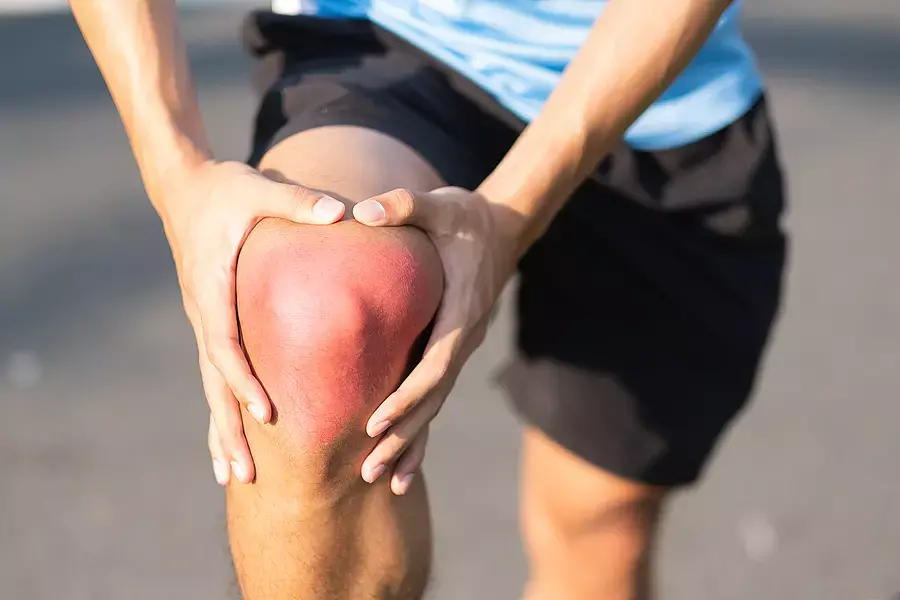- Home
- Medical news & Guidelines
- Anesthesiology
- Cardiology and CTVS
- Critical Care
- Dentistry
- Dermatology
- Diabetes and Endocrinology
- ENT
- Gastroenterology
- Medicine
- Nephrology
- Neurology
- Obstretics-Gynaecology
- Oncology
- Ophthalmology
- Orthopaedics
- Pediatrics-Neonatology
- Psychiatry
- Pulmonology
- Radiology
- Surgery
- Urology
- Laboratory Medicine
- Diet
- Nursing
- Paramedical
- Physiotherapy
- Health news
- Fact Check
- Bone Health Fact Check
- Brain Health Fact Check
- Cancer Related Fact Check
- Child Care Fact Check
- Dental and oral health fact check
- Diabetes and metabolic health fact check
- Diet and Nutrition Fact Check
- Eye and ENT Care Fact Check
- Fitness fact check
- Gut health fact check
- Heart health fact check
- Kidney health fact check
- Medical education fact check
- Men's health fact check
- Respiratory fact check
- Skin and hair care fact check
- Vaccine and Immunization fact check
- Women's health fact check
- AYUSH
- State News
- Andaman and Nicobar Islands
- Andhra Pradesh
- Arunachal Pradesh
- Assam
- Bihar
- Chandigarh
- Chattisgarh
- Dadra and Nagar Haveli
- Daman and Diu
- Delhi
- Goa
- Gujarat
- Haryana
- Himachal Pradesh
- Jammu & Kashmir
- Jharkhand
- Karnataka
- Kerala
- Ladakh
- Lakshadweep
- Madhya Pradesh
- Maharashtra
- Manipur
- Meghalaya
- Mizoram
- Nagaland
- Odisha
- Puducherry
- Punjab
- Rajasthan
- Sikkim
- Tamil Nadu
- Telangana
- Tripura
- Uttar Pradesh
- Uttrakhand
- West Bengal
- Medical Education
- Industry
Novel Surgical Technique beneficial for Lateral Patellofemoral Ligament Reconstruction Using Bone Tunnels: Study

Medial patellar instability (lateral patellofemoral ligament tear) is a rare condition which is commonly associated with lateral release for lateral patellar instability. LPFL is a lateral stabilizer of the patellofemoral joint. Reconstruction of LPFL is necessary to provide stability to the patella-femoral joint in patients with instability.
Arora et al describe a novel technique of trans-osseous reconstruction of LPFL to gain stability and have better graft incorporation. This is an easy, novel, and reproducible technique which can be used to reconstruct LPFL.
The patient is laid in a supine position and the ipsilateral peroneus longus tendon is harvested and doubled to create an LPFL graft. A 4-cm incision is made over the lateral epicondyle of the femur and dissected till the bony prominence. The insertion of the LPFL is confirmed with a guide wire on the image intensifier. The insertion point is 5 mm distal to and anterior to the tip of the lateral epicondyle. The guide wire is advanced from the lateral to the medial aspect of the femur, taking care to avoid inter-notch placement. It is then subsequently over-reamed with a reamer corresponding to graft size. A 2-cm incision is marked on the middle one-third of the lateral aspect of the patella. Careful dissection is done to expose the lateral aspect of the patella without exposing the joint. The mid-point of the patellar bone is identified under visualization. If necessary, with fluoroscopic guidance, its position is marked with a guide wire and drilled from the lateral to the anteromedial direction to prevent joint violation and subchondral damage.
This ensures the final endo button resting position to be subcutaneous, on the anteromedial surface of the patella. Then, an endo button reamer of 4.5 mm is passed over the guide wire through and through the patella. The graft-sized tunnel reamer is then drilled for a distance of 10 mm medially to allow 10 mm of graft in the final tunnel. The prepared graft is passed into the patellar tunnel with an adjustable loop endo button and flipped on the patella’s anteromedial aspect, following the shuttle sutures. Then, the graft is passed in the extra synovial layer to avoid intra-articular placement to come out in the incision made for the femoral tunnel. This is followed by cycling of 10 repetitions to allow graft elongation and prevent future creep. The graft is then shuttled into the femoral tunnel and fixed with an interference screw 1–2 sizes larger than the graft diameter.
The authors commented – ‘The novelty of this technique is using bone tunnels and peroneus longus as graft choices for LPFL reconstruction. While the bone tunnel provides better graft ft and incorporation, peroneus longus gives adequate stability without compromising knee function, including surgical site morbidity associated with hamstrings.’
Further reading:
Surgical Technique for Lateral Patellofemoral Ligament Reconstruction Using Bone Tunnels: A New Method Arora et al Indian Journal of Orthopaedics (2024) 58:330–337 https://doi.org/10.1007/s43465-023-01091-2
MBBS, Dip. Ortho, DNB ortho, MNAMS
Dr Supreeth D R (MBBS, Dip. Ortho, DNB ortho, MNAMS) is a practicing orthopedician with interest in medical research and publishing articles. He completed MBBS from mysore medical college, dip ortho from Trivandrum medical college and sec. DNB from Manipal Hospital, Bengaluru. He has expirence of 7years in the field of orthopedics. He has presented scientific papers & posters in various state, national and international conferences. His interest in writing articles lead the way to join medical dialogues. He can be contacted at editorial@medicaldialogues.in.


